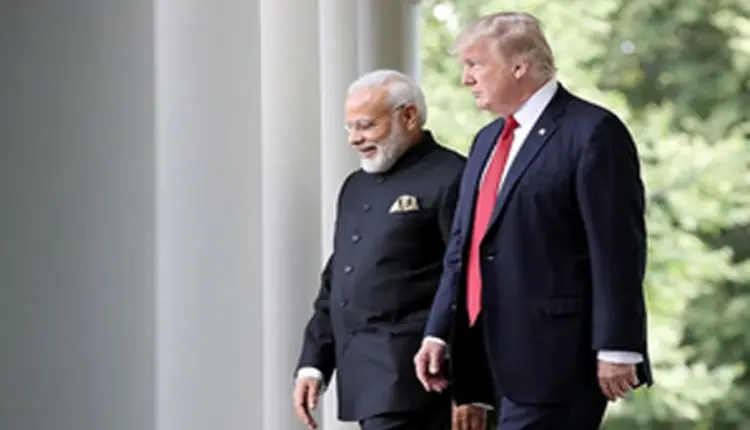New Delhi: After months of strained relations marked by tariff disputes and sharp rhetoric, India and the United States appear to be taking cautious steps toward reconciliation.
In the past 48 hours, a series of developments — ranging from optimistic statements by key leaders to joint military exercises — have sparked hope that the two democracies are working to restore their strategic partnership. Union Commerce Minister Piyush Goyal and US Treasury Secretary Scott Bessent have both struck conciliatory notes, while a joint military drill in Alaska underscores the enduring defence ties between the two nations.
A Trade Deal By November?
Speaking at the Annual Global Investor Conference 2025 in Mumbai on Tuesday, Piyush Goyal expressed confidence that India and the US could finalise a Bilateral Trade Agreement (BTA) by November. “I hope things will get back on track soon, and we will conclude a BTA by the fall, as discussed by our leaders in February,” Goyal said, acknowledging that “a little bit of geopolitical issues” had overshadowed trade talks in recent months.
The optimism comes despite tensions triggered by US President Donald Trump’s imposition of 50% tariffs on Indian exports in August, a move aimed at pressuring New Delhi over its continued oil trade with Russia. Trump’s vocal criticism, including calling India’s trade practices “one-sided,” had cast a shadow over bilateral ties. However, Goyal remained upbeat, framing global trade uncertainties as “a glass half full” that presents opportunities for businesses.
Adding to the positive signals, US Treasury Secretary Scott Bessent softened his earlier critical stance on India. In a recent interview, he described India as the world’s most populous democracy, with values closer to the US than to Russia or China. “At the end of the day, two great countries will get this solved,” Bessent said, hinting at a resolution to the ongoing trade frictions. This marks a shift from his earlier accusations that India’s oil purchases from Russia were benefiting a few wealthy individuals.
Joint Military Exercise Signals Robust Defence Ties
While trade talks dominate headlines, the military sphere is quietly reinforcing the India-US partnership. In Alaska, the 21st edition of the annual joint military exercise, Yudh Abhyas, commenced on September 1 and will continue until September 14. A battalion from India’s Madras Regiment is participating alongside a US Brigade Combat Team, showcasing the deep defence cooperation between the two nations. The exercise follows the recent visit of the US Navy’s submarine support ship USS Frank Cable to Chennai port, marking its second trip to the region in two years.
This two-week drill, focused on enhancing interoperability and strategic coordination, underscores that despite trade tensions, the defence and strategic ties between India and the US remain robust. It serves as a reminder of the broader geopolitical alignment, particularly in countering China’s influence in the Indo-Pacific region.
India’s Strategic Balancing Act
Amid these developments, India’s decision to skip China’s Victory Day military parade in Beijing on September 3 has been interpreted as a deliberate signal of its strategic priorities. The parade, held shortly after the Shanghai Cooperation Organisation (SCO) Summit in Tianjin attended by Prime Minister Narendra Modi, saw participation from over 25 countries. India’s absence from the event reflects its cautious approach to avoid aligning with any military axis, particularly one led by China. Instead, New Delhi remains committed to strengthening ties with Quad nations — Australia, Japan, and the US— to maintain a balance of power in the Indo-Pacific.
Modi’s presence at the SCO Summit, where he met Russian President Vladimir Putin and Chinese President Xi Jinping, had raised eyebrows in Washington. However, India’s decision to steer clear of the Beijing parade suggests a nuanced approach, balancing its relations with Russia and China while prioritising its strategic partnership with the US.
A Path Forward
The recent statements from Goyal and Bessent, coupled with ongoing military cooperation, indicate that both nations are keen to move past recent frictions. The proposed BTA, if finalised, could significantly boost trade and investment, addressing long-standing issues like market access and tariff disparities. From these, the signals are clear: India and the US are working to rebuild trust and strengthen their “defining relationship of the 21st century,” as described by the US Embassy in New Delhi.
As the two countries navigate geopolitical complexities, the coming months will be critical in determining whether this renewed momentum can translate into concrete outcomes.



Comments are closed.